Blog
_747_390_s_c1.jpg)
#bioPGH: Amphibians Ahead!
 A resource of Biophilia: Pittsburgh, #bioPGH is a weekly blog and social media series that aims to encourage both children and adults to reconnect with nature and enjoy what each of our distinctive seasons has to offer.
A resource of Biophilia: Pittsburgh, #bioPGH is a weekly blog and social media series that aims to encourage both children and adults to reconnect with nature and enjoy what each of our distinctive seasons has to offer.
Spring is on the Way
If you’ve been following along the blog for a few years now, you can probably guess what I am looking forward to as the weather warms and the nights get rainy: salamander time! And not just salamanders — the first “warm” (50 degrees or higher) rainy evenings of spring are the perfect time to venture near a vernal pool or wetland to see a seasonal part of amphibians’ life cycles — the breeding season. Once the threat of a deep freeze subsides, frogs, salamanders and newts find places to lay their eggs, which brings many normally-hidden species out into the open for a brief period of time. You might have a chance to spot one!
When and Where Should You Look?
Have you ever passed a pond or wetland and heard the overwhelming clamor of a chorus of spring peepers? That’s a great place to start! If you can go out in the evening when it’s slightly raining and near that 50° mark, you should be able to see frogs (you may have to find them by sound!) A few other good spots to see frogs or even salamanders are below. Just keep in mind to always check out the rules for evenings in the parks since some close at dark, or get permission from property owners if you go exploring. Some of the parks/facilities may also specifically offer evening walks to look for amphibians if you check out their calendars.
- The wetland trail at North Park
- The Jennings Environmental Education Center
- The Allegheny Land Trust’s Wingfield Pines and Devil’s Hollow (both open sun up to sundown)
- Hollow Oak Land Trust’s Meeks Trail at Montour Woods (park at Hassam Rd, property open 24/7)
- Raccoon Creek State Park is hosting a dedicated frog walk on March 20
- A vernal pool near you – check out the Vernal Pool Database from the Pennsylvania Natural Heritage Program
What Might You See or Hear?
Pennsylvania has 39 species of frogs and salamanders across the state. As for frogs, in Allegheny County you are most likely to see wood frogs, spring peepers and pickerel frogs, and later in the spring you may come across American toads, American bullfrogs, green frogs and maybe a Fowler’s toad or gray tree frog. Salamanders will be much trickier to see, but you might catch a glimpse of a spotted salamander, Jefferson salamander, slimy salamander, northern dusky salamander or a northern two-lined salamander.
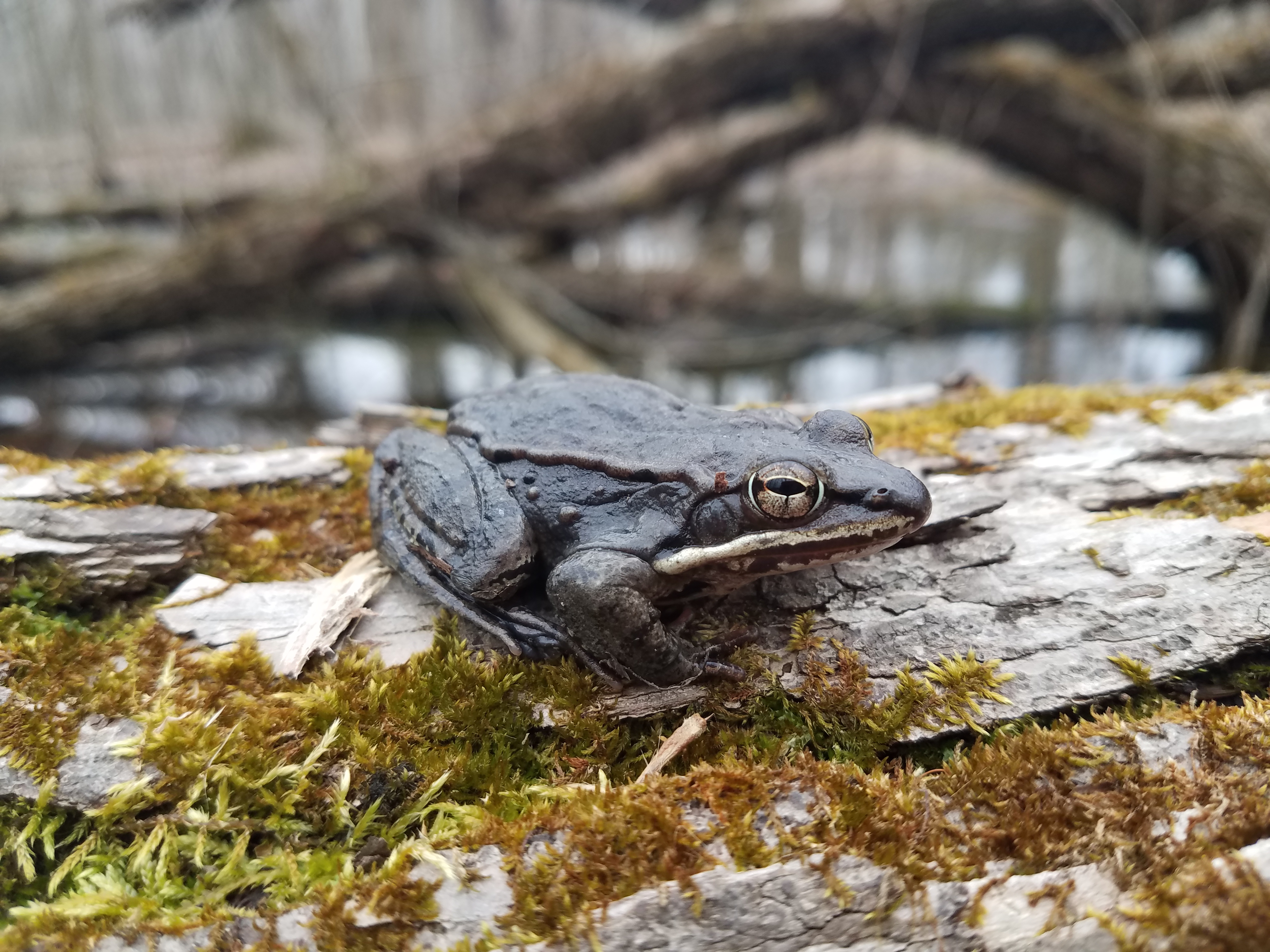
Wood frog (Lithobates sylvaticus), Photo credit: Lori Pepka
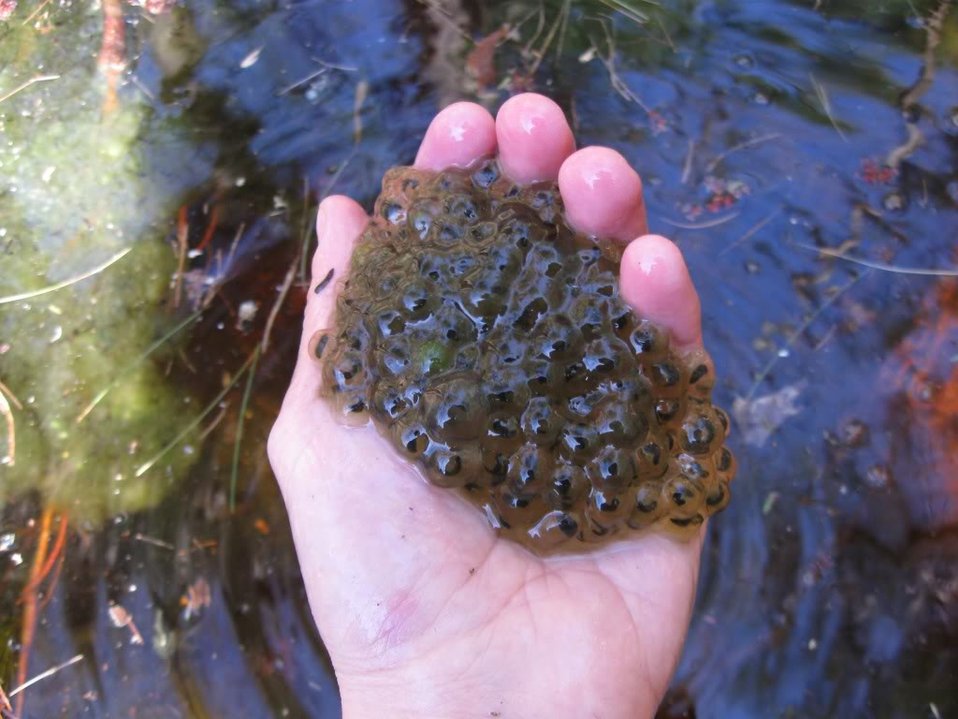
If you look carefully in the water, you may even spot an egg mass. Wood frog eggs, USFWS, public domain
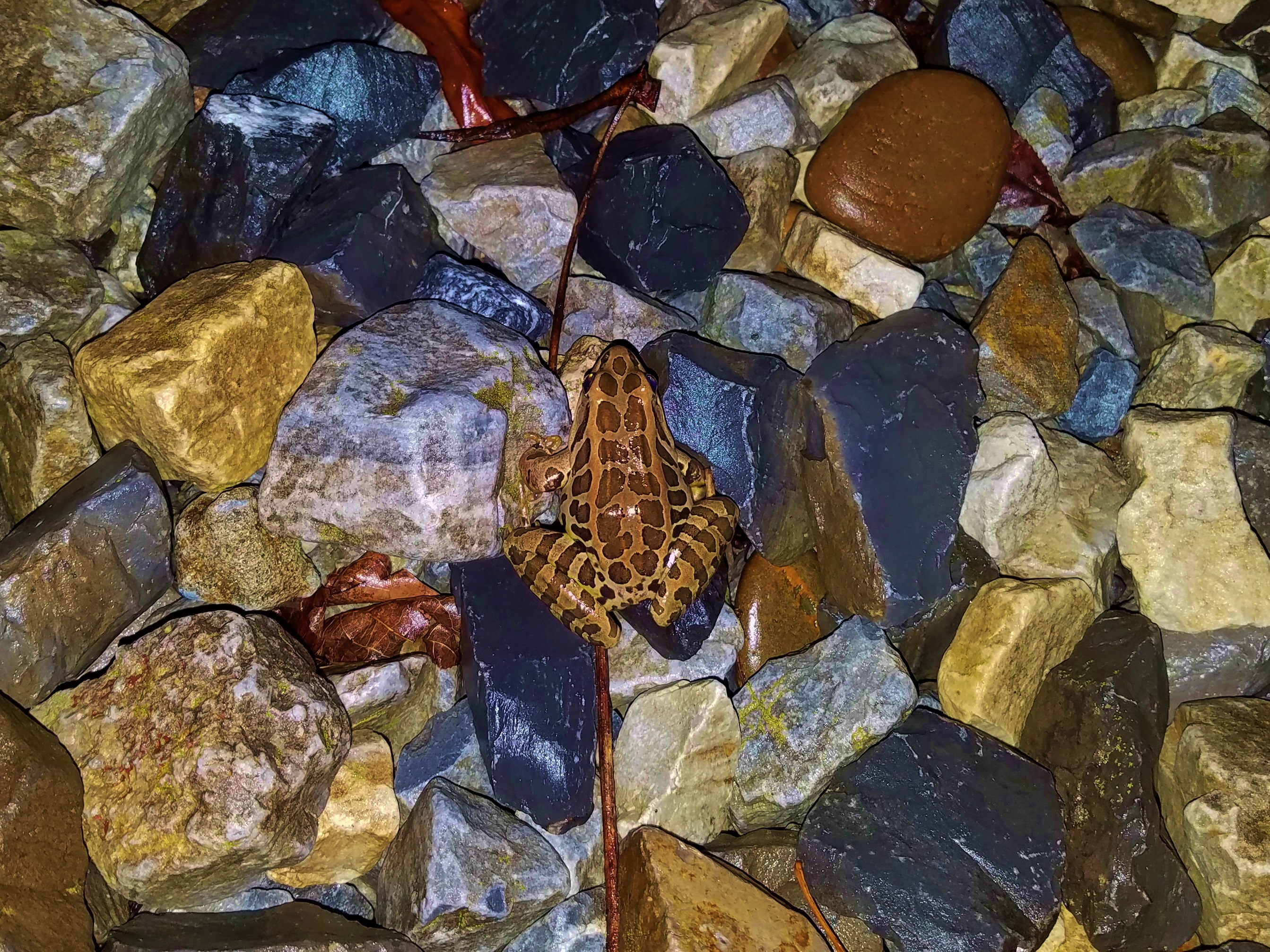
Pickerel frogs (Lithobates palustris), Photo credit: Maria Wheeler-Dubas
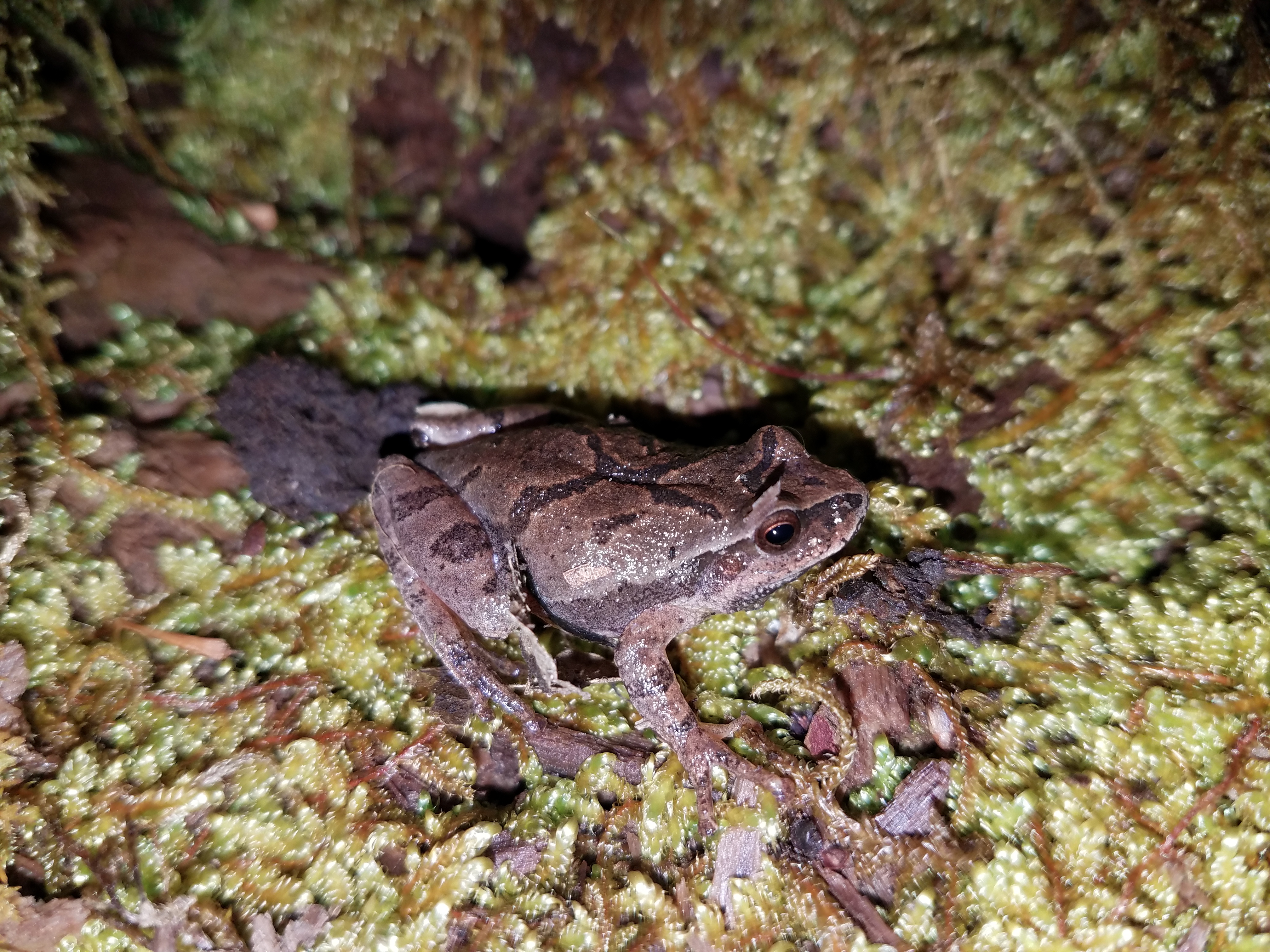
Spring peeper (Pseudacris crucifer), Photo credit: Lori Pepka
Listening is key to the efforts! You can follow the sound or just enjoy the cacophony. Here is a recording of spring peepers I made two years ago in Hampton Township. In person, you could almost feel your eardrums pulsating from the intense sound!
Spotted salamanders … they are my personal local favorite, but they are very difficult to spot even this time of year. They are fossorial, meaning they live underground, and only really come up for breeding.
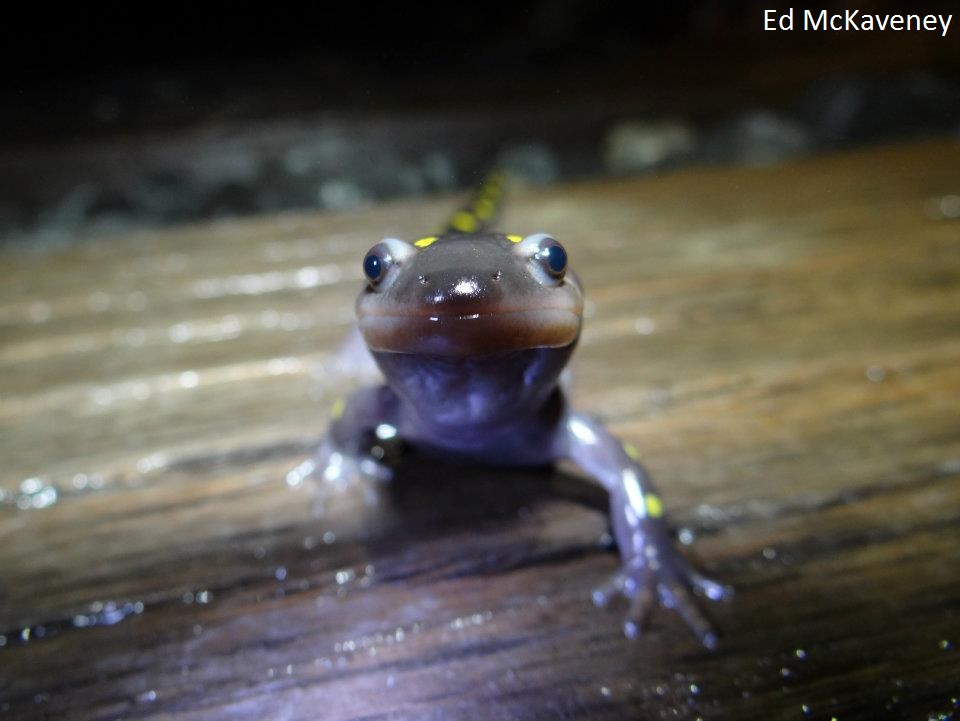
Photo credit: Ed McKaveny
What is the Best Way to View Wildlife?
From a distance. The kindest thing we can do for wildlife is to give them space. It’s never a good idea to pick up or handle wild animals – especially smaller creatures like frogs. We are much larger than they are and could accidentally hurt them (our skin is actually quite rough on amphibians). Plus we look like giant, scary predators to them. If you are visiting a park with boardwalks through a wetland, please stay on the boardwalk. And when outdoors, remember to leave no trace of your visit!
Something to Keep in Mind
This time of year, vernal pools are incredibly important bodies of water. Vernal pools, also sometimes called ephemeral ponds, are “temporary” ponds that appear in the spring, usually as a result of snow melt and lingering rain. That same spot may be muddy or even completely dry in the summer or fall, but the when it becomes a standing body of water in the spring, they become a prime location for amphibian eggs. Since they lack the predators of a permanent pond or stream, they are a safe place for little embryos to develop. Sometimes these pools are referred to as glorified puddles, but they are anything but! They are a critical part of our local ecology.
So be sure to have fun exploring! And as you take in the sights and ribbity sounds of spring, enjoy how wondrous our local environment is.
Continue the Conversation: Share your nature discoveries with our community by posting to Twitter and Instagram with hashtag #bioPGH, and R.S.V.P. to attend our next Biophilia: Pittsburgh meeting.
Resources
#bioPGH Blog: Salamanders in the Spring
#bioPGH Blog: A Rainy Walk on a Spring Evening
#bioPGH Blog: Eggs in the Spring
#bioPGH Blog: More Than a Puddle
PA Fish and Boat Commission: Amphibians and Reptiles
Photo Credit: Andreas Weith CC-BY-SA-4.0, Greg Schechter CC-BY-2.0

